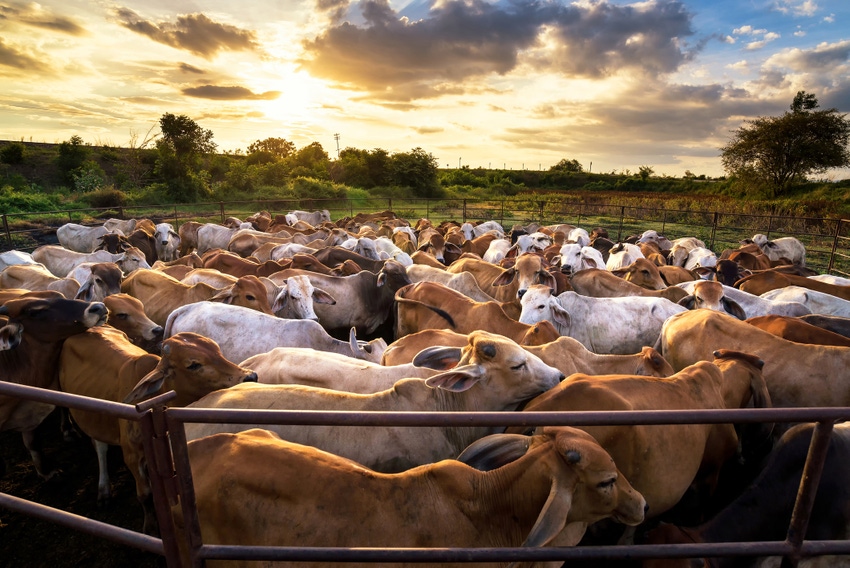New ERS report finds family farms still dominate in countryside, with 90% of all U.S. farms owned or operated by families.

Farm production has continued to shift to larger farms, according to a new report released by the U.S. Department of Agriculture’s Economic Research Service (ERS). Still, that consolidation has brought with it improved efficiencies and greater opportunities, and current profit measures provide strong incentives to grow.
Consolidation in crop production has been persistent and widespread. In contrast to crops, consolidation in livestock appears to be episodic, with little change over some periods, interspersed with dramatic changes in farm/industry organization and farm size.
James MacDonald, chief of the ERS Structure, Technology & Productivity Branch and author of the report, noted that the consolidation has increased at a more dramatic rate on livestock farms than on crop farms. For example, from 1987 to 2012, dairy herds increased 11-fold, while crop farms increased just two- or three-fold. Meanwhile, cow/calf production has hardly seen any change, likely because of the limited amount of pasture and rangeland available.
MacDonald said benefits have resulted from consolidation, and it will likely continue. “I think consolidation has contributed to productivity growth in agriculture and enabled it to realize efficiencies. For instance, dairy and pork have become net exporters, whereas they were once net importers,” he said.
Consolidation, however, has brought some trade-offs, including increased environmental risks. In addition, MacDonald said the data show that there is a strong shift away from highly diversified farm operations with livestock and crop production together, moving instead towards more specialization among crops and species.
Many farms have reorganized to focus on either livestock or crop production and on a more limited set of crops, livestock species or livestock production stages. “Specialization can allow farmers to expand in the commodities that they continue to produce as they develop more specialized skills and acquire more specialized capital equipment,” the report noted.
Livestock production continues to move toward farms that produce no crops but instead rely on purchased feed. Field crop farms were considerably less likely to produce livestock in 2015 than in 1996. For example, 46% of corn production was carried out on farms that also produced livestock in 1996, but by 2015, just 33% of corn production was on farms that also produced livestock.
Technology plays an important role in the consolidation increases. “Changes in technology allow a farmer to manage more acres or animals than they could have 20, 30 or 40 years ago,” MacDonald said. Larger, faster and smarter equipment can allow for the completion of a task in the field in less time. Advances in inputs and development practices similarly reduce the number of hours needed for specific tasks.
On the livestock side, changes in animal housing and feeding systems require less labor and allow farm families to effectively manage larger herds, MacDonald stated.
The amount of U.S. farm production that came from farms with at least $1 million in sales reached 51% by 2015, compared to 31% in 1991 (adjusted for price changes). ERS and National Agricultural Statistics Service reports classify "large farms" as those with at least $1 million in sales and "very large farms" as those with at least $5 million in sales.
Very large farms (sales basis) are more likely to specialize in specialty crops, dairy production, egg production or cattle feeding and use relatively little land. Field crop farms tend to report a midsize to large range of sales and to use lots of cropland. Many contract poultry and hog producers are relatively small farms.
Despite increased consolidation, most production continues to be carried out on family farms, which are owned and operated by people related to one another by blood or marriage. Family farms accounted for 90% of farms that had at least $1 million in sales in 2015, and 83% of production came from million-dollar farms.
The pace of farm consolidation appears to have slowed after 2007. In livestock, only dairy shows continued rapid consolidation. In field crops and in vegetable/melon crops, land continued to consolidate onto larger farms after 2007, but at a slower pace than in previous years. However, financial considerations still favor larger operations, as their profits (rates of return on assets) considerably exceed those for smaller operations.
About the Author(s)
You May Also Like




.png?width=300&auto=webp&quality=80&disable=upscale)
